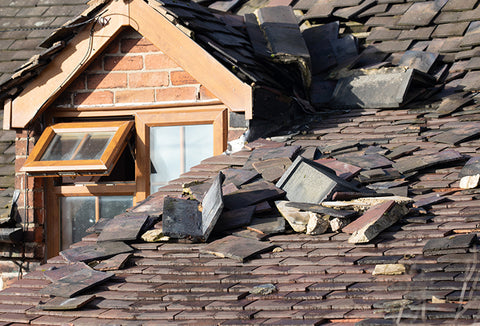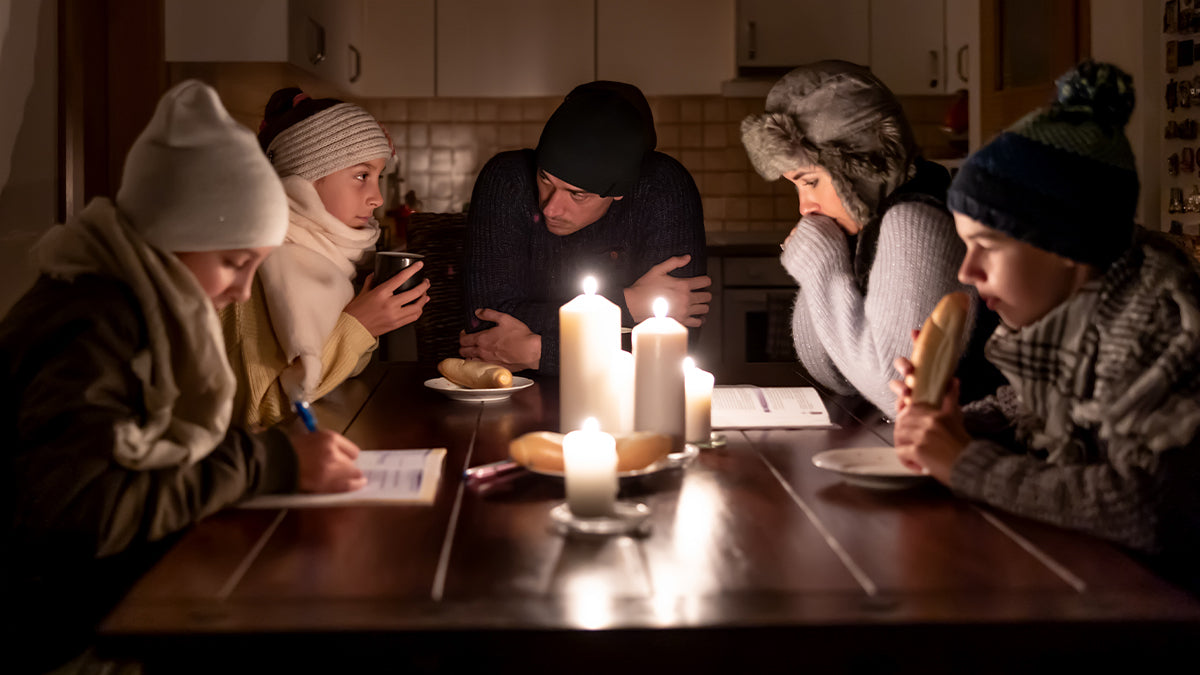Fact or Fiction: Natural Disaster Survival Myths
When a natural disaster strikes, quick thinking and the right knowledge could save lives. Unfortunately, numerous myths and outdated procedures surrounding natural disasters and how to survive them persist, potentially putting people at greater risk.
Join us as we debunk some common myths and set the record straight.

Myth 1: Stand in a Doorway During an Earthquake
The Reality: This commonly heard advice is actually outdated. While it originated from the observation that doorframes were sometimes the only standing part in demolished adobe houses, modern buildings are engineered differently.
In contemporary homes, doorways are no stronger than any other part of the structure and often have doors that can swing and injure you. Instead, you should “drop, cover, and hold on." Get down on the ground, move underneath a sturdy table or another piece of furniture, and hold on until the shaking stops.
Myth 2: Take Cover in a Bathtub During a Tornado
The Reality: While a bathtub may be good shelter in some situations, it's not a one-size-fits-all solution. The safest place during a tornado is a storm cellar or an underground bunker. If those aren't available, move to the lowest, most interior part of your building, away from windows, and cover yourself with something sturdy.
If a bathtub is your only option, cushion yourself with a mattress. But remember, without a sturdy cover, you’re still vulnerable to flying debris.
Related Read: Preparing for a Tornado
Myth 3: Open Windows to Equalize Pressure During a Tornado
The Reality: People once thought that opening windows would help equalize the pressure during a tornado, preventing the house from exploding. This is a myth! In reality, opening windows allows damaging winds to enter the home, causing greater harm and potentially even causing the roof to lift off.
The best action is to immediately seek shelter. Time spent opening windows is precious time you could use to get away safely.

Myth 4: Taping Windows Prevents Shattering in Hurricanes
The Reality: Taping windows is a futile effort in a hurricane. The tape won’t prevent windows from breaking, but will instead produce larger, more dangerous shards of glass when the wind blows through.
Alternatively, install proper shutters or high-impact glass designed to withstand hurricane conditions.
Related Read: 4 Hurricane Myths You Need to Know
Myth 5: Levees and Dams Guarantee Protection Against Floods
The Reality: While levees and dams are designed to protect against flooding, it is possible for them to fail. If they are overtopped—or if the storm is more severe than they were designed to handle—the levees and dams won’t be able to stop the water.
It’s essential to follow evacuation orders and not solely rely on these structures for protection.
Myth 6: Flash Floods Are Only a Risk for Inland Areas
The Reality: Flash floods are most often caused by extremely heavy rainfall, but can also be caused by levees and dams breaking, mudslides, or quickly melting snow. This means flash floods can occur nearly anywhere, even in urban areas.
Flash flooding happens extremely quickly, often taking people by surprise. Always heed flood warnings no matter where you live, and never attempt to cross floodwaters.
Myth 7: Lightning Never Strikes the Same Place Twice
The Reality: This saying is very common, but it is only a myth. Lightning can strike any location more than once, especially tall, pointed, or isolated objects.
If you find yourself out in the open during a thunderstorm, it’s crucial to seek shelter. Safe shelter options include vehicles, homes, offices, and stores. Avoid sheltering under trees or other small structures in open areas and stay away from bodies of water.

Myth 8: If You’re Driving and a Tornado Approaches, Hide Under an Overpass
The Reality: This is dangerous advice. Overpasses can create wind tunnel effects, increasing the risk of injury from flying debris.
If you cannot drive to a safe shelter quickly, exit your vehicle and find a low-lying area, such as a ditch, to lie down in and cover your head with your arms. Make sure your location is far enough from your vehicle to avoid it being blown onto you. If you do abandon your vehicle, leave it somewhere it won’t block emergency vehicles.
Myth 9: Hurricanes Only Affect Coastal Areas
The Reality: While coastal areas are certainly at higher risk for the initial impact of hurricanes, the effects can be felt hundreds of miles inland. Inland areas may see heavy rainfall and strong winds, as well as flooding, tornadoes, and power outages.
It’s crucial for residents living inland to also prepare for hurricanes and heed evacuation warnings if they are in the predicted path of the storm.
Myth 10: You’re Safe After the Shaking Has Stopped
The Reality: If the shaking caused by an earthquake has stopped, do not immediately assume the worst is over. Aftershocks can occur within minutes of the first quake ending, and can continue for days after.
Aftershocks are not usually as strong as the initial earthquake, but they can still cause injury and damage. Follow the same “drop, cover, and hold on” steps if faced with an aftershock.
Preparedness Is Key
Understanding the truth about natural disasters can increase your chances of survival. Prepare ahead by staying informed, creating an emergency plan, and assembling a disaster supply kit.
When traveling, familiarize yourself with what natural disasters commonly affect those areas. Remember, knowledge is your most powerful tool in any emergency situation!


3 comments
Margaret
Regarding #1 Earthquakes and door frames. The article states that contemporary modern homes are safely built to withstand earthquakes. How old is modern contemporary? I have a friend whose home is over 100 years old. My mother’s home is over 70 years old. My nieces homes are all over 40 years old. Can you clarify the age range for when myth #1 is not a myth? Thank you.
Les T
It has become popular in the media to criticize the drop and cover position when facing a threat such as an earthquake, tornado, or nuclear blast. I my opinion, seeking a safe area, dropping and covering, is better than standing upright and making yourself a bigger target for injury. When objects are falling around you, or flying at you, inches count. Moving a few inches can sometimes be the difference between a near miss and an injury.
JL
About earthquakes, that shaking may be a foreshock, with a larger one after as well and then there may be aftershocks…
Stay safe!